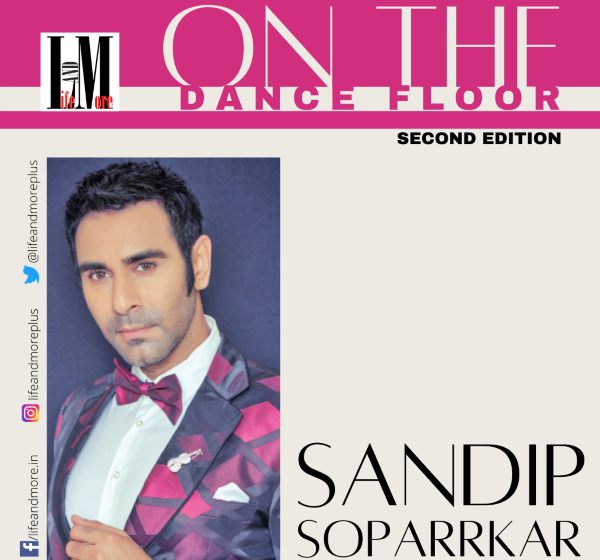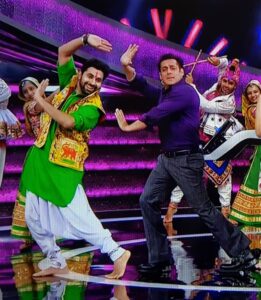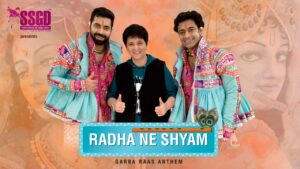Soni brothers are deeply passionate about teaching & popularising Garba

We Indians should be very proud that our Indian culture is being celebrated all over the world. Many Indian dance forms are ruling the world stage and one such dance form is Garba. Are you aware that Garba and Dandiya Raas are very popular in The United States of America where more than 30 universities have Raas and Garba competitions on a huge scale every year with professional choreographies. The Canadian city of Toronto now hosts North America’s largest annual Garba by number of attendees. Garba is also very popular in the United Kingdom where there are a number of Gujarati communities who hold their own Garba nights and widely popular among the Gujarati community worldwide.
Apart from that there is a huge interest in Garba among the youth of India too and in particular, the Gujarati diaspora. Traditionally, this dance is performed in concentric circles and the entire group performs once step in sync, with the beat starting slow and slowly catching on speed. In India the most well known school that teaches this culturally rich dance form is Soni’s School of Garba Dance headed by two extremely talented and handsome brothers Jigar Soni and Suhrad Soni.

Suhrad is a software engineer and MBA (finance) working as a Project Manager in an European IT company where as Jigar is an MBA (marketing) working as GM, Sales and Business Development India for a Helicopters and Private jet company. But the two truly teach from the heart; teaching Garba is their passion and to popularise it their mission. This can be seen from the fact that at their school teaching does not happen only around the Navratri season but throughout the year. I spoke with Suhrad Soni about the growing popularity of the dance in India and more and this is what he had to say:
Where did you learn Garba from?
It’s all in the genes, Garba in our family started from our mother Kokila Soni. She was never a professional dancer but immensely gifted and it all came to us from her who did authentic dance. We used to play Garba in Navratri festivals and used to come up with our own innovations. As kids we used to win Best Garba Dancer awards in popular Navratri festivals which kept continuing as we grew with age. We have won the popular “Sankalp King” Award multiple times Awarded to the Best Dancer in the Grand Finale of the popular Sankalp Navratri Utsav. Jigar and sister Nivruti being elder siblings started playing Garba much before me and later I followed their footsteps. We learnt and worked under folk-dance legend late Kumari Indumati Lele ji popularly known as didi in the dance fraternity. For many years we worked closely with didi, performing and assisting her and also winning gold medal at the National Level Youth festival organised by the Government of India.
Suhrad Soni with Salman Khan
What made you start a school?
We started teaching Garba casually in our house to our society kids in 1998 however looking at the scenario in Navratri where we realised a big percentage of performers were not actually performing Authentic Garba we felt there was a serious need to spread the Authentic Garba knowledge we got from Didi. Hence in 2003 we started teaching in a more professional setup. In 1998 around 5 kids used to learn from us. Our school Soni’s School of Garba Dance now teaches around 2000 students every year in 28 cities in 9 countries Worldwide. We have a structured syllabus of 5 Grades and Levels.
The word Garba comes from the Sanskrit word for womb and so implies gestation or pregnancy — life. Traditionally, the dance is performed around a clay lantern with a light inside, called a Garbha Deep (womb lamp). This lantern represents life, and the fetus in the womb in particular. The dancers thus honor Durga, the feminine form of divinity. Garba is performed in a circle as a symbol of the Hindu view of time. The rings of dancers revolve in cycles, representing birth, to life, to death and again to rebirth, the only thing that is constant is the Goddess, that one unmoving symbol in the midst of all of this unending and infinite movement. The dance symbolizes that God, represented in feminine form in this case, is the only thing that remains unchanging in a constantly changing universe (jagat). The Garbha Deep has another symbolic interpretation. The vessel itself is a symbol of the body, within whom Divinity (in the form of the Goddess) resides. Garba is danced around this symbol to honor the fact that all humans have the Divine energy of Devi within them.
Which have been your most memorable performance?
We have performed for Falguni Pathak and Salman Khan which is something we will never forget but like they say the first is always special so for me in 2014 when were called to conduct a Garba Workshop in London is most memorable. That was our first International trip. We were invited by the Mayor of London to perform at the Trafalgar Square Diwali Festival, probably one of the Biggest Diwali festivals in the World. When we reached, there was an announcement, ” Can we please vacate the centre area for the Soni brothers to perform” The crowd was shifted by the security and it was we 2 brothers who were asked to perform at the centre of Trafalgar Square witnessed by around 30000 people. We were all over in UK papers the next day. 3 years later we both got Awarded in the Same UK House of Commons for our significant contribution towards promoting Authentic Garba and thus Indian Culture Globally.
Soni brothers with Phalguni Pathak
What are your future plans?
Our vision as always been to Take Garba Global. We have reached in 9 countries and wish to cover more. Also wish to setup a Folk-dance school and contribute towards promoting all other beautiful folk dances of India in addition to Garba ofcourse.
What were the problems you faced to reach to this level?
When we started teaching, there was no concept of a Garba school, majority believed that there was no need for a Garba school. The reason was Navratri being such a popular festival and literally every other person used to go and dance in a Navratri night, they felt they already knew the dance and there was no need to join a school. However, we believed there is a lot to teach as there was hardly any awareness on the authentic part of the dance. Over the period of these 23 years of teaching, we have developed a syllabus innovating different Garba and Dandiya movements, making sure not crossing the boundaries of authenticity.




